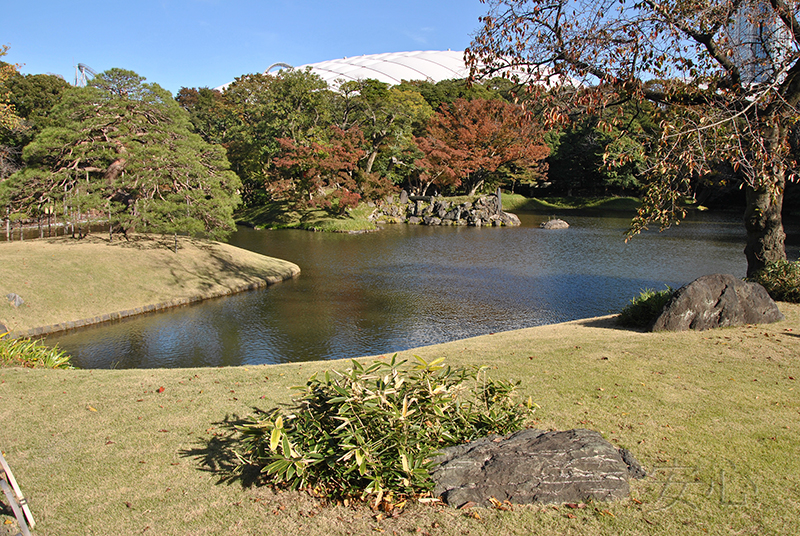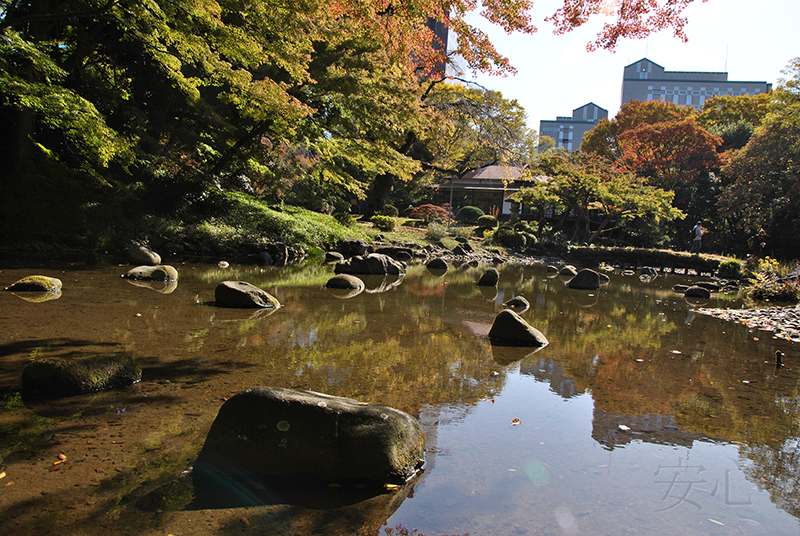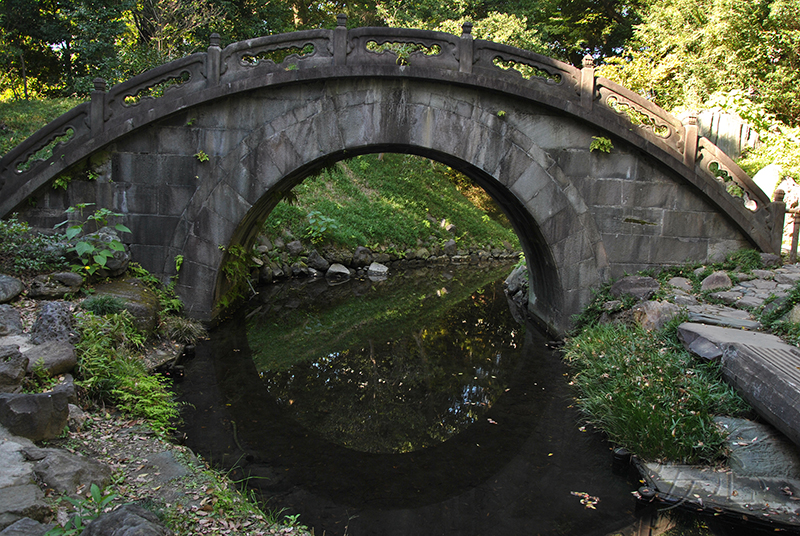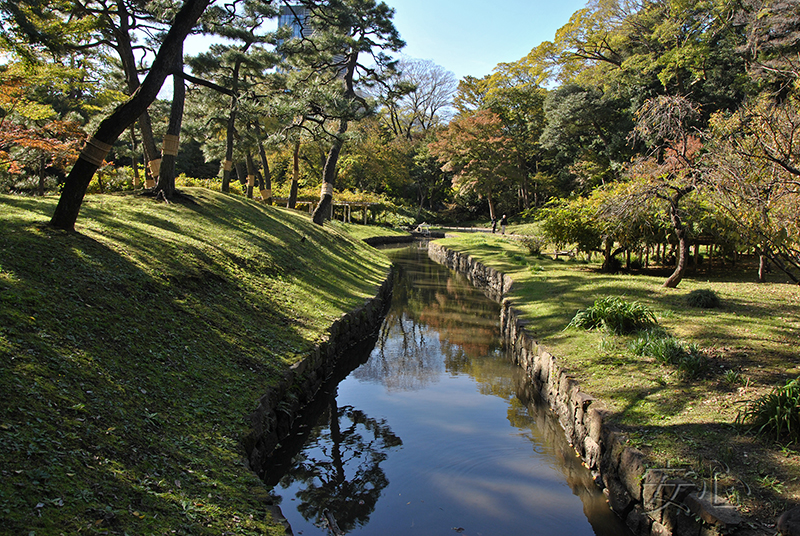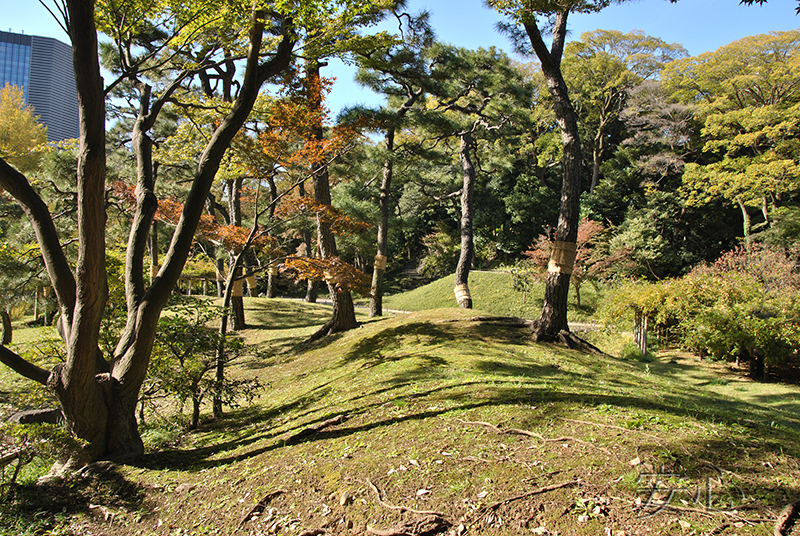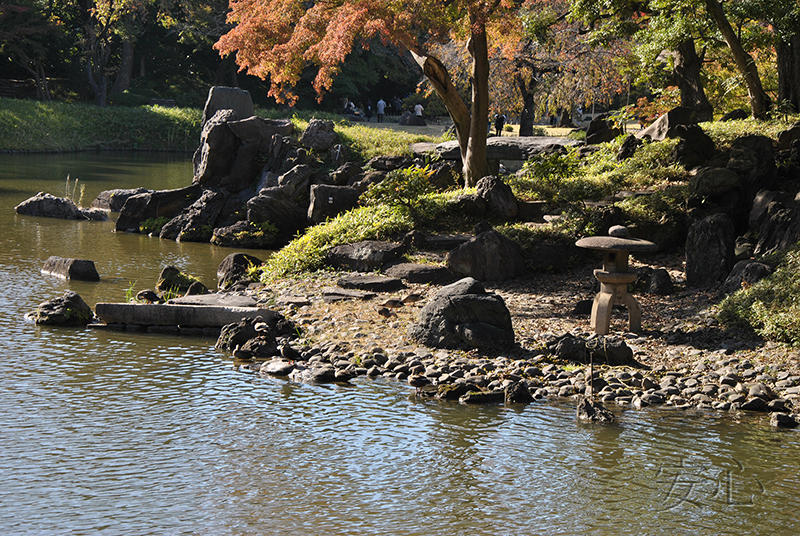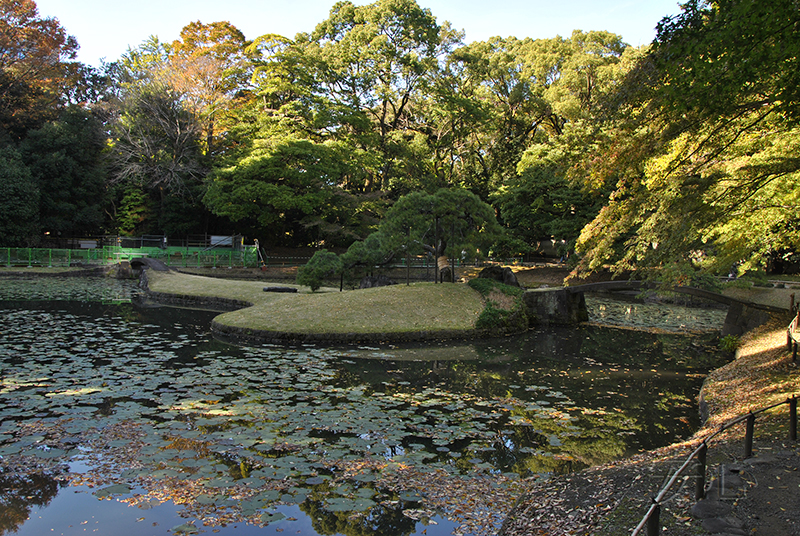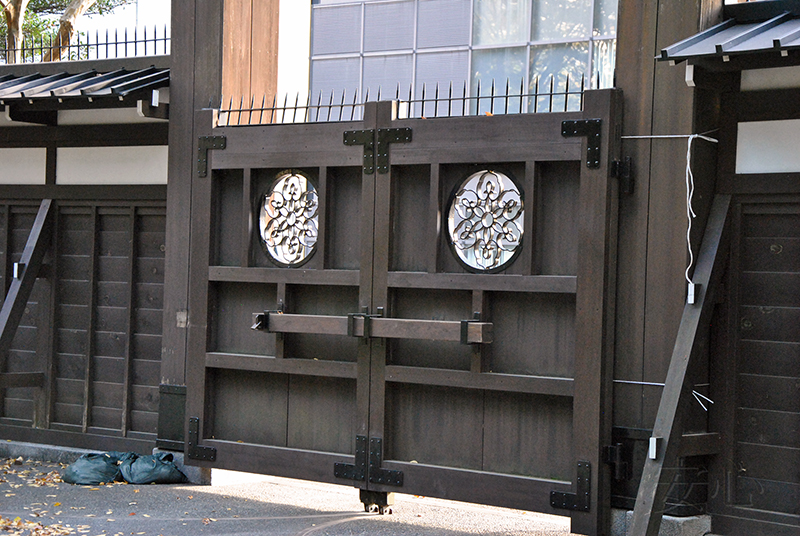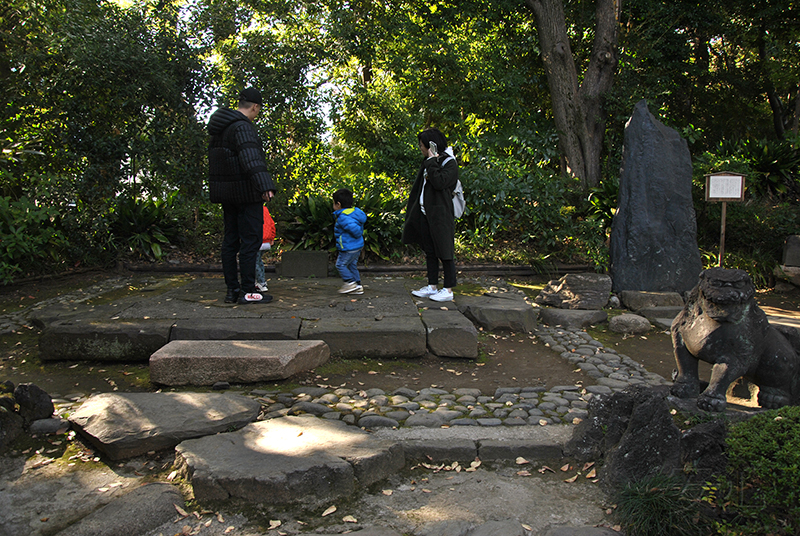
Koishikawa Korakuen garden
When I planned our trips to Japan, I first of all prefered small gardens. I had particular interest of former private estates owned by famous people. Large parks in the cities seemed less interesting to me. However, by the second trip, I realized that I was making a mistake, and at least a few of these attractions should be visited. First of all, because parks in Japan are often former gardens of the people from the very top of the government.
So one of such interesting gardens we visited in November 2019. Koisikawa Korakuen Garden was originally built by Yorifusa Mito, the son of Ieyasu Tokugawa, at the beginning of the Edo period. However, it was completed as a garden by his son, Mitsukuni. A Chinese scientist Zhu Zhiyu actively helped in creating the garden, so we can see here many images of sights from the China. Even the name came from the Chinese text in Hanchuen's "Gakuyo-ki", admired by Mitsukuni which said that there is "a need for those in power to worry about maintaining power first and then enjoy power later". "Koraku-en" means "the garden for enjoying power later on".
The garden is located in Tokyo, Bunkyo District, within walking distance of Iidabashi Subway Station. The entrance is quite inconspicuous, without bright signage or massive gates. To the right of the entrance is a sign where you can read general information about the garden.
A little further, next to the box office, there is a large plan of the garden. It will also be issued to you when you purchase a ticket. I strongly advise you to study the plan or read about it in advance. The garden is large, its area is more than seven hectares, and with a huge number of paths it is easy to miss some place.
Koishikawa Korakuen is a stroll garden that rich people created in the Edo era. As a rule, such gardens were located in vast areas where you could walk, arrange receptions, have fun. In those days, daimyo literally competed with each other in luxury and wealth. Arranging gardens, they tried to fill them to the maximum with various wonders, unusual elements. And Koisikawa Korakuen is a great example.
The first thing we saw entering the garden was the Kantoku-tei tea house. It is on the left jf the gates. Windows to the floor allow those inside to enjoy the garden view.
We reached a large pond. It is divided into two parts by a wide bridge. The left side is all planted with lotuses. But, of course, in late autumn they don't look as beautiful as in summer.
There is a big sakura. They say that when it bloomed, even ordinary people were allowed into the garden. But in autumn time a stunning, perfectly formed pine tree catches the eye.
We decided to go to the left. Otherwise, there was a risk of missing something. The hills on the right are the image of the Chinese mountain complex Sho-rozan, literally little Lushan.
Soon we reached the shallow Oigawa River. We crossed it by the bridge. The part behind the bridge (Seiko-no-tsutsumi) is an imitation of the shore of Lake Seiko located in Hangzhou (China).
On the other shore at the foot of the hill there are tall flat stones that depict a well-known natural phenomenon - rocky outcrops in the form of flat and compressed walls. Such stones were especially revered in Shintoism. They are called byobu iwa, as they look like old cloth screens with a pattern (bebu). It is said that the third shogun Iemitsu often visited this place and sat on the stone near the river.
In the depths you can see the bright red bridge Tsuten-kyo.
You can climb to it and look at the river from above.
But passage over the bridge is prohibited. To cross the river, you need to use the stepping stones on Oigawa. The crossing is conveniently made of double-row so that people can easily go in both directions.
Small stones protruding from the water look beautiful from here.
We went up the stone stairs and saw a place fenced with a bamboo fence.
There used to be a temple to niche a statue of Kannon, the Goddess of Mercy. It imitated a building found in Kiyomizu-temple in Kyoto, which is famous for its veranda jotting over a cliff. But, apparently, something happened, the temple was destroyed, and now only the picture next to it shows how it looked.
Well, and, of course, there is an opportunity to admire the river through the maple branches.
Then we walked along the top of the hill. There are benches for those who want to stop and to look at the garden from above.
On the way we met a small Tokujin-do temple. When Mitsukuni was 18 years old, he read a biography of Boyi and Shuqi, two Chinese brothers. They were the sons of King Guzhu, but abandoned power for ethical reasons. Then, in protest against the atrocities under the rule of the new emperor Zhou, the brothers went on a hunger strike and died. The future shogun was so moved by the book that he installed wooden figures of Boyi and Shuqi in this temple.
I do not know if they are inside now, the temple was closed, and we could not check. So we went down.
Soon we found the Full Moon bridge, Engetsu-kyo. It got this name because a moon is formed by joining the figure og this bridge to its reflection on the water.
Then again we went downstairs, meeting on the way a tall chozubachi (water basin) and one more empty place. When Mitsukuni, the second lord of Mito-Tokugawa family, met the 3rd shogun, Iemitsu, he was given a statue of a patron saint of literature. Later he built a small shrine called Hakke-do to enshrine the statue in. The shrine was burnt down after a great earthquake in 1923.
Soon we came to the plum grove. Mitsukuni loved plum-blossom so much to the extent he used his name as “bairi”, what means “village of plum”. About thirty different types of plums are collected here.
And here is a small memorial of Fujita Toko, a scientist and friend of daimyo Mito Tokugawa Nariaki, who helped him in political matters.
In this part of Koisikawa Korakuen, an agricultural garden and natural landscapes are combined: rice fields, fruit trees, an iris swamp and trellis with wisteria.
You can take a rest in the gazebo Kuhachi-ya.
By the way, not far from here we saw two shops with Japanese fast food.
And we again returned to the main pond, but from the other side. It is believed that from that point it resembles Lake Biwa. It is also the best place to watch the Horai island.
Besides of the paradise island of the immortals, in the pond there is also an island - Chikubu. Chikubu-jima is a small floating island on Lake Biwa, which is considered a place of power.
On the shore, we found a monument - Eiyo-hi stone. But it is dedicated not to man, but to the beloved falcon of the seventh lord of Mito-Tokugawa, presented to him by the shogun.
It already seemed to us that we went around the whole garden, but the branch of the path led us somewhere inland. At the end we found another pond. This is the site where a shoin-style guest house of Mito Domain was located. Those days, it was separated by a Chinese gate from Koen (behind garden) on the side of Dai-Sensui.
We turned back, walking by a wide stone paved road among the hills. This mountain is called Kisoyama, as old trees shading sunlight and a winding road along a mountain stream reminded people of the Kisho Highway, one of the main highways in Kyoto.
On the way you can climb to the gazebo, standing on the top of the hill.
And you can see another place of the former temple. Yorifusa, the 1st lord of Mito-Tokugawa family, built this small shrine to niche the statue of Saigyo. The monument inscribed with a poem of Saigyo was erected by the wife of the 9th lord. The shrine was burnt during the air raids in 1945.
So here is another place where we admired the place ))
We spent about two hours in the garden, and it was wonderful time. Sure, the garden is beautiful at any time of the year, but we saw it in the fall, and I can say with absolute certainty that in November Koisikawa Korakuen is simply magnificent! A little disappointment for me was only unrestored attractions. The Japanese usually try to recreate what was destroyed for some reason. Maybe one day they will do it here. But any way, the garden is just beautiful, and I would love to go back there.
Garden Information:
Address: 1-6-6 Koraku, Bunkyo-ku, Tokyo 112-0004, JAPAN
Opening hours: from 9 a.m. to 5 p.m.
Closed: from December 29 to January 1
anshin©2011All rights reserved. When using the materials of the site, reference is obligatory.
Proposals for co-operation, as well as comments and suggestions on the site please send to the address: anshinsad@gmail.comtel: +7 (965) 121-80-60, 10am-20pm




